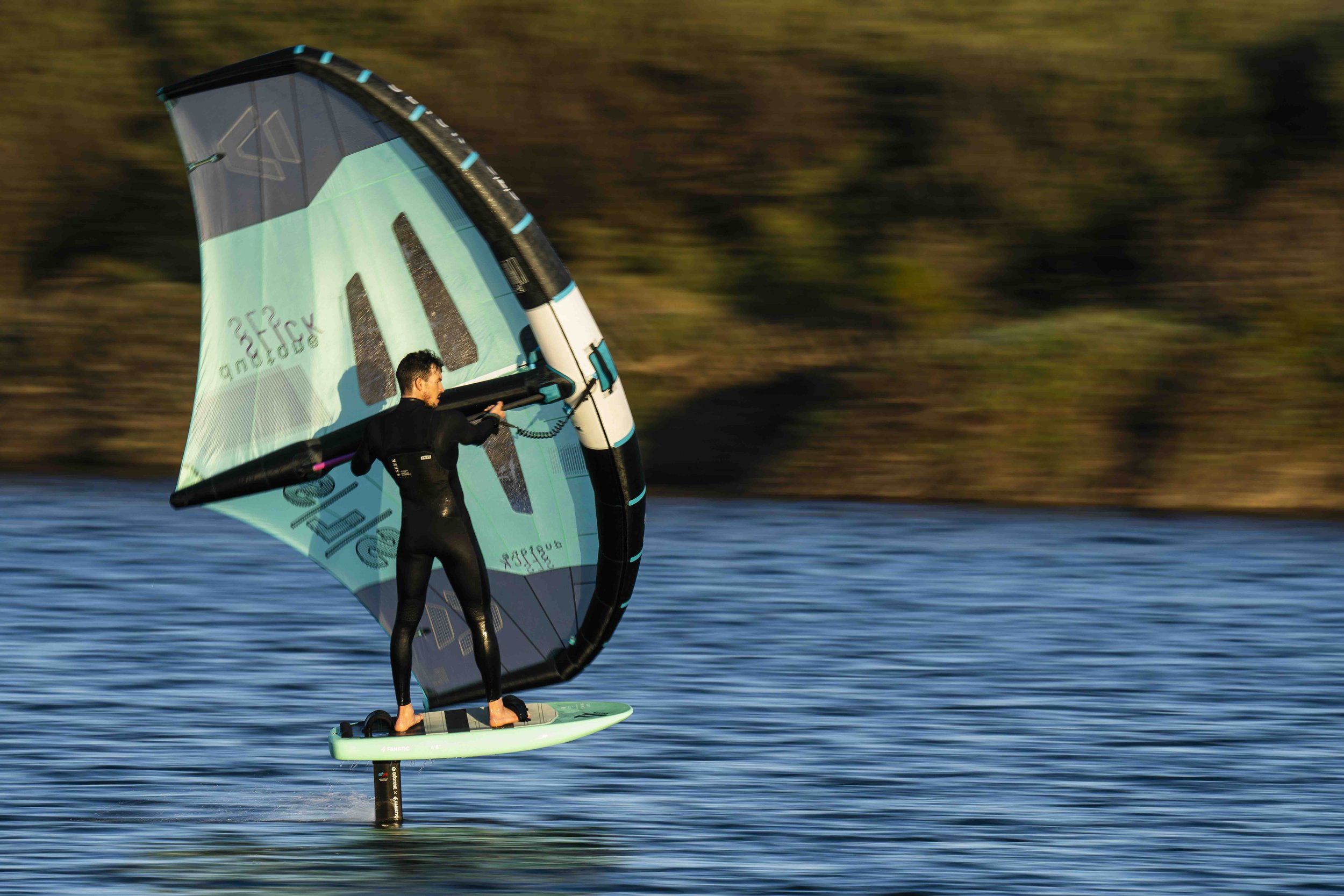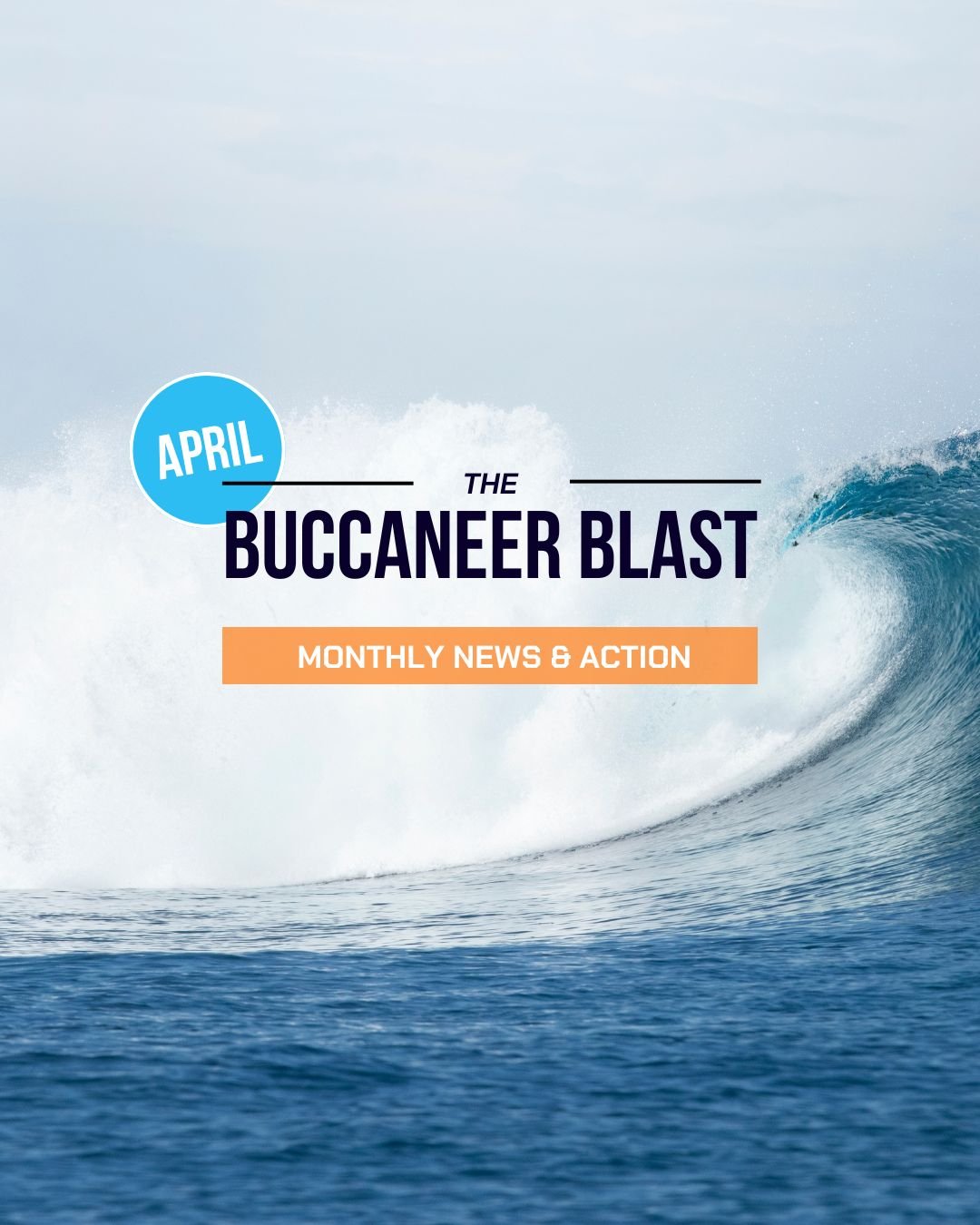
wing foiling: Everything You Need to Know to Get Started
Curious about wing foiling and wondering if it's the right sport for you? You're not alone.
So let’s start at the beginning – If you haven’t heard of Wing Foiling and need some clarity of what it is, read on, else skip this bit and move on to the next section…
Sometimes simply called “winging,” is an exhilarating water sport that blends elements of windsurfing, kitesurfing, and surfing. It involves using a handheld wing to harness the power of the wind while riding on a board, equipped with a hydrofoil. This sport has been gaining huge popularity for its unique mix of freedom, challenge, and fun. From a beginners perspective we also think when you look at the kit involved, it feels way less daunting and more accessible to try.
Here are the main components and features of Wing Foiling:
-
The wing is the primary propulsion tool. It’s an inflatable, handheld sail that the rider controls directly with their hands. Unlike kites, the wing isn’t attached to the rider with lines, offering more direct control and versatility. Its lite and if things feel like thee are getting out of hand you can just let go and it’s not going to drag you Face first down the beach. (The wing is usually attached to a leash so it won’t just blow away)
-
The board used in Wing Foiling can either be a standard stand-up paddleboard (SUP) or a specialized foil board equipped with a hydrofoil beneath it. The foil lifts the board out of the water as you gain speed, reducing drag and allowing for smoother rides.
-
The hydrofoil is a key component that distinguishes this sport. It’s a wing-like structure attached to a mast beneath the board, enabling the board to lift above the water's surface, reducing resistance, and allowing for high-speed gliding.
-
While not always used, some riders choose to wear a harness that can be attached to the wing to help manage power and reduce arm fatigue, especially in strong winds.
-
Wing Foiling is best enjoyed in moderate to strong winds and on flat water or small waves. The hydrofoil allows riders to glide smoothly over choppy conditions that would be challenging for other water sports.
-
Wing Foiling includes various styles, such as freeride (general riding), freestyle (performing tricks), and wave riding (surfing waves). Each style requires different skills and approaches.
-
As with any extreme sport, safety is crucial. Common gear includes a helmet, impact vest, and occasionally a wetsuit for cold water. Some wings also come with a leash that keeps the wing connected to the rider if they lose grip.
Wing Foiling is an accessible and thrilling sport but requires proper instruction to handle the wing and board effectively.
Beginners should consider taking lessons from certified instructors to ensure they develop the necessary skills and stay safe.
Why is wing foiling so awesome?
Wing Foiling is considered an awesome sport for many reasons, combining physical exhilaration with a deep connection to nature. Here’s why it captivates so many enthusiasts:
The sensation of gliding above the water on a foil, powered by the wind, provides an unmatched adrenaline rush.
|
The sensation of gliding above the water on a foil, powered by the wind, provides an unmatched adrenaline rush. |
Why is wing foiling so addictive?
Wing Foiling is addictive for several reasons. The rush of endorphins, the physical and mental benefits, and the sheer excitement of the ride all contribute to its allure.
Once you experience the sensation of flying above the water, it’s hard to resist the urge to keep coming back for more.
How hard is it to get into wing foiling?
Getting into wing foiling can be challenging, but with the right approach and resources, it’s achievable for most people. Here are some key factors to consider:
-
Initial Learning: Controlling the wing and getting comfortable with the board can be tricky at first. A few lessons are usually needed to grasp the basics and get up on the foil.
Physical Fitness: Wing Foiling requires a moderate level of fitness, particularly in your core, arms, and legs. However, you don’t need to be an athlete to start.
-
Professional Instruction: Lessons from a certified instructor are highly recommended. They provide structured learning, safety training, and hands-on practice.
Lesson Duration: Beginners often need 6-12 hours of lessons to grasp the basics. This can be spread over a few days or weeks, depending on your schedule.
-
Gear Familiarity: You’ll need to get familiar with the wing, board, and hydrofoil. Renting gear initially can be cost-effective and allows you to try different setups.
Safety Gear: Helmets, impact vests, and wetsuits are important for safety and comfort.
-
Wind and Water Conditions: Learning in the right conditions is crucial. Moderate winds and flat waters make for the best learning environment.
Location: Some places are better suited for beginners due to favourable wind patterns and shallow, obstacle-free waters (Check out the Buccaneer Sessions App for Great Wing Foiling Spots).
-
Regular Practice: Like any sport, regular practice is key. The more you practice, the quicker you’ll progress.
Dealing with Challenges: Expect some falls and frustrations along the way. Patience and perseverance are important.
-
Wing Foiling Community: Joining a wing foiling club or community can provide support, encouragement, and valuable tips from experienced riders.
Mentorship: Having a more experienced foiler as a mentor can greatly enhance your learning experience.
-
Cost of Lessons: Professional lessons can be expensive, but they are a worthwhile investment for safety and rapid progress.
Buying Equipment: Once committed, purchasing your own gear is a significant expense but necessary for regular practice.
Is wing foiling physically hard?
Wing Foiling can be physically demanding, but the difficulty level depends on factors like your fitness, experience, and conditions. Here’s a breakdown of the physical aspects involved:
Core Strength and Stability
Engages Core Muscles: Wing Foiling requires strong core muscles to maintain balance and control. A strong core helps you stabilise on the board and manage the wing’s power.
Improves Balance: The sport demands good balance, especially when foiling above the water.
Upper Body and Arm Strength
Wing Control: Your arms and shoulders are essential for controlling the wing. The repetitive motion of steering can be strenuous, especially in strong winds.
Leg and Lower Body Strength
Board Riding: Standing on the board and maintaining stability requires strong legs. Your legs bear the brunt of balance and steering.
Foiling Maneuvers: Executing turns and transitions involves engaging your leg muscles for quick, powerful movements.
Cardiovascular Fitness
Endurance: Wing Foiling is a full-body workout that can be quite aerobic, especially in challenging conditions.
Adaptation to Conditions: Adapting to changing wind and water conditions can elevate your heart rate and test your endurance.
Flexibility and Coordination
Dynamic Movements: Wing Foiling involves dynamic movements, requiring flexibility and coordination to handle the wing and board effectively.
Learning Curve: Beginners might find the sport challenging due to the need to quickly learn and integrate various skills.
Safety Considerations
Physical Endurance: Being physically fit enhances your ability to handle falls and exertion, making the sport safer and more enjoyable.
Recovery: The impact from falls and the effort required can lead to muscle soreness, so good physical conditioning helps in recovery and reduces the risk of injury.




Just starting out?
DISCOVER OUR TOP SPOTS TO LEARN to wing foil
want to find out more?
Click on each location to find out more, or read the full blog about our best spots to learn to kitesurf by hitting the button below.
CHECK OUT OUR BLOGS AND ARTICLES THAT feature wing foiling
Check out the Buccaneer Sessions App. Built by real Surfers, Wingers, Kiters, paddlers and Riders.
Find Your Perfect Spot:
Explore loads of locations and connect with a community of action sports enthusiasts through the Buccaneer Sessions app.
Create Sessions and Events:
Set up and share your own sessions or events, with options to share and message individuals, groups, or followers.
Get Real-Time Updates:
Get detailed info on tides, wind, waves, and water quality at coastal locations, so you’re always prepared!








